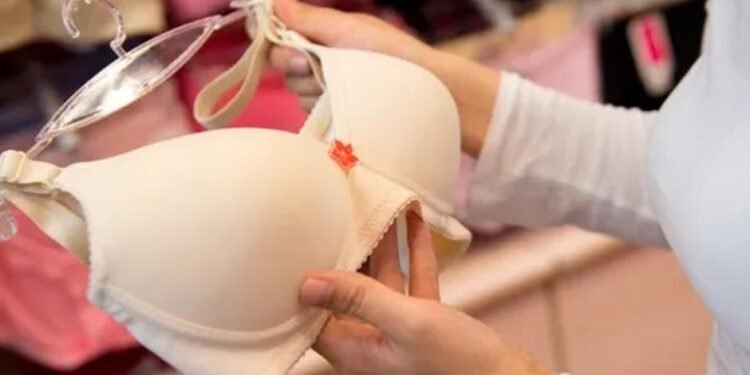We will explore the significant transformation in women’s clothing over the years, particularly how comfort has gradually taken center stage. Historically, women’s fashion has often prioritized aesthetics over practicality, resulting in garments that may have looked appealing but were usually uncomfortable. This dichotomy has been particularly pronounced in formal wear and business attire, where women have frequently had to compromise on comfort for style. However, there has been a marked shift in the past few decades. Modern women demand clothing that aligns with their active lifestyles while reflecting personal style and current trends. Comfort-driven materials, such as soft cotton blends and stretch fabrics, have become increasingly popular, allowing for ease of movement without sacrificing style. This evolution highlights an essential cultural shift toward valuing comfort as a crucial factor in clothing choices, challenging long-standing norms in the fashion industry.
The Balance Between Trend and Wearability
The fashion landscape is often driven by rapid trends that come and go, creating a continuous cycle of what’s “in” and “out.” However, the concept of wearability challenges this fleeting nature by focusing on how practical and comfortable an outfit is for everyday life. Designers are now faced with the task of marrying trend-driven styles with functional designs that cater to the needs of modern women. The rise of athleisure wear exemplifies this balance, allowing women to wear stylish yet comfortable outfits at the gym and in social settings. By incorporating elements such as breathable fabrics, adjustable fits, and versatile designs, brands can create clothing that caters to the active lifestyle while remaining on-trend. This fusion of trend and wearability demonstrates a significant departure from traditional fashion norms, encouraging women to prioritize personal comfort without compromising style.
Impact of Lifestyle on Clothing Choices
Women’s daily lives today are diverse and dynamic, characterized by work, family responsibilities, social engagements, and personal interests. As such, clothing choices have become more reflective of this multifaceted lifestyle. Women seek garments that seamlessly transition from work to play, allowing them to maintain comfort without sacrificing professionalism or style. For instance, tailored trousers incorporating stretchy fabrics or dresses that offer breathability while remaining chic have gained popularity. Additionally, the demand for versatility has led many brands to design multi-functional pieces that can be dressed up or down, further supporting the need for comfort. As women navigate their busy lives, the importance of clothing that accommodates functionality and style becomes ever more evident, leading to an increased appreciation for brands that prioritize these qualities.
The Role of Fabric in Comfort
Fabric choice plays a critical role in the comfort of womens clothing at Maluvrian. As consumers become more informed about material qualities, there is a growing preference for fabrics that offer breathability, softness, and stretch. Natural fibers, such as cotton, linen, and wool, are celebrated for their comfort and ability to regulate temperature, making them ideal for various climates. On the other hand, synthetic materials like polyester and spandex are also gaining traction due to their durability and elasticity. Brands are now exploring innovative fabric blends that combine the benefits of both natural and synthetic fibers to create clothing that feels good against the skin and allows for ease of movement. As awareness of ethical and sustainable fashion grows, consumers also gravitate toward eco-friendly fabrics, which often prioritize comfort and environmental responsibility. This focus on fabric enhances wearability and reflects a broader commitment to quality and conscious consumption in women’s fashion.
The Influence of Body Positivity
The body positivity movement has significantly impacted women’s clothing, emphasizing the importance of comfort and fit for all body types. This shift challenges traditional beauty standards and encourages brands to design clothing that caters to diverse silhouettes. As a result, many companies are expanding their size ranges and offering inclusive designs that prioritize comfort for all women. The focus on fit means that women are more likely to choose garments that provide freedom of movement and make them feel good in their skin. This evolution in fashion has opened the door for a broader definition of beauty that celebrates individuality and promotes self-acceptance. Consequently, brands prioritizing comfort and fit in their designs will likely resonate more with consumers who seek empowerment through their clothing choices. This movement enhances personal comfort and fosters a more inclusive and supportive fashion industry.
The importance of comfort in women’s clothing is becoming increasingly recognized in the fashion industry. As we have explored, the shift from prioritizing aesthetics to embracing wearability reshapes the landscape of women’s fashion. This evolution reflects broader societal changes, including the diverse lifestyles of women, the influence of body positivity, and the demand for innovative fabrics. As brands adapt to these shifting priorities, we can expect a future where comfort and style coexist harmoniously. Ultimately, the pursuit of comfortable clothing represents a trend and a cultural movement that empowers women to express themselves confidently and authentically, transforming how they approach fashion.












